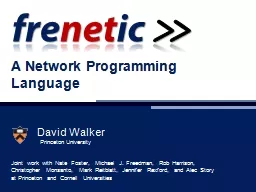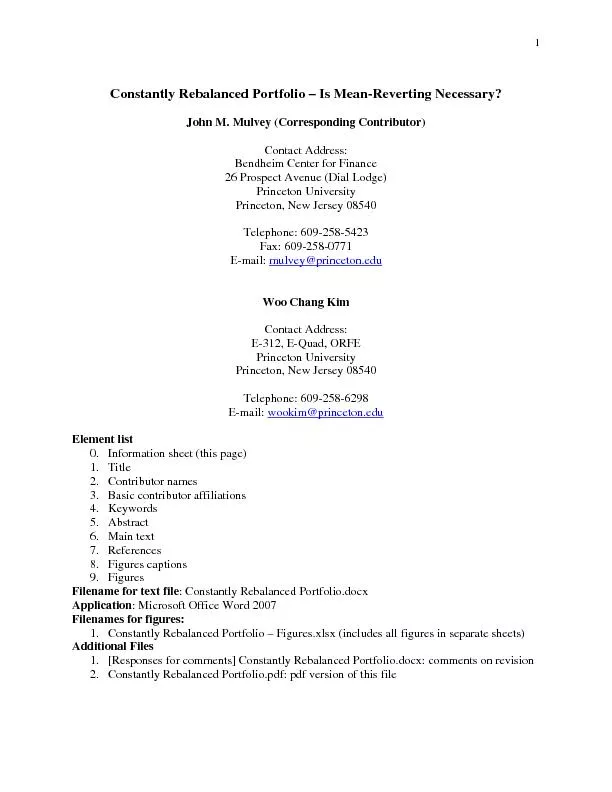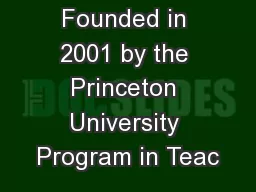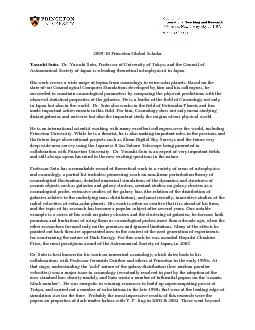PPT-David Walker Princeton University
Author : danika-pritchard | Published Date : 2018-09-21
Joint work with Nate Foster Michael J Freedman Rob Harrison Christopher Monsanto Mark Reitblatt Jennifer Rexford and Alec Story at Princeton and Cornell Universities
Presentation Embed Code
Download Presentation
Download Presentation The PPT/PDF document "David Walker Princeton Uni..." is the property of its rightful owner. Permission is granted to download and print the materials on this website for personal, non-commercial use only, and to display it on your personal computer provided you do not modify the materials and that you retain all copyright notices contained in the materials. By downloading content from our website, you accept the terms of this agreement.
David Walker Princeton University: Transcript
Download Rules Of Document
"David Walker Princeton University"The content belongs to its owner. You may download and print it for personal use, without modification, and keep all copyright notices. By downloading, you agree to these terms.
Related Documents














